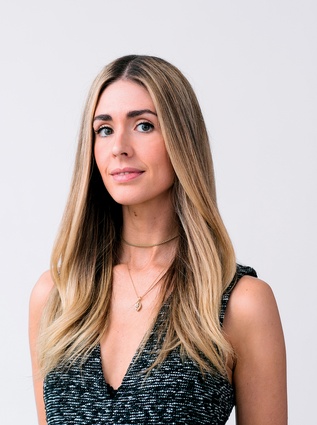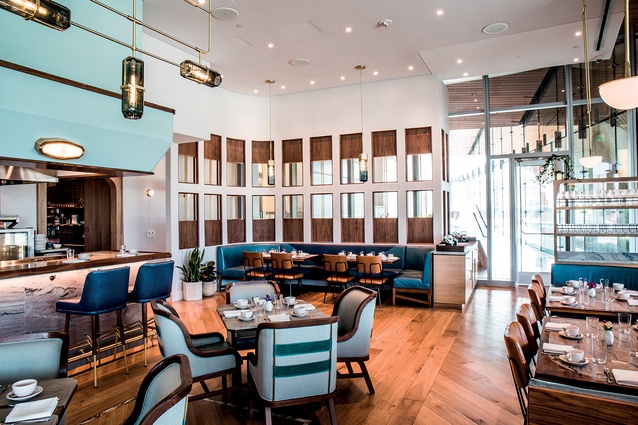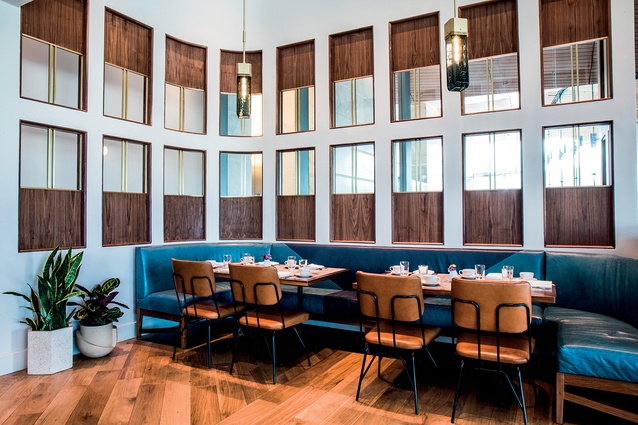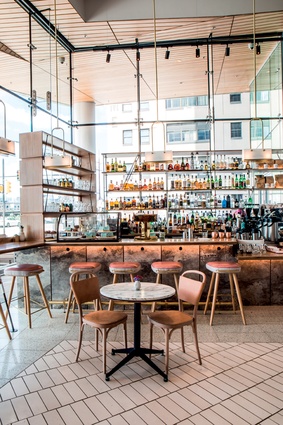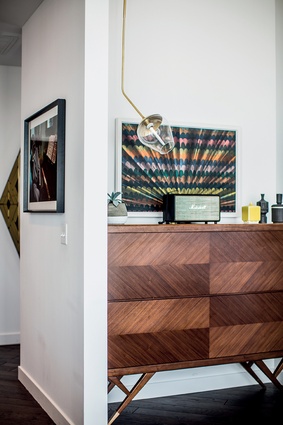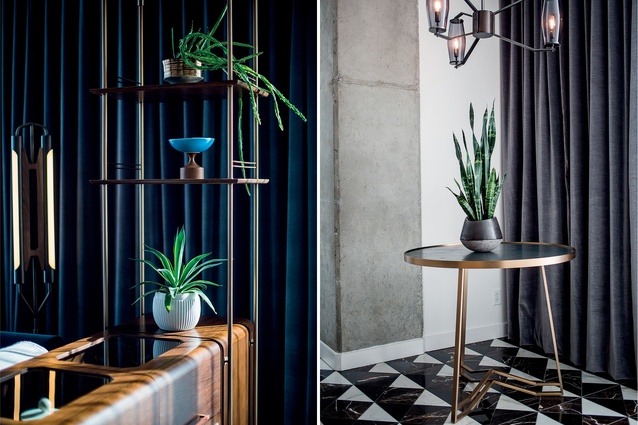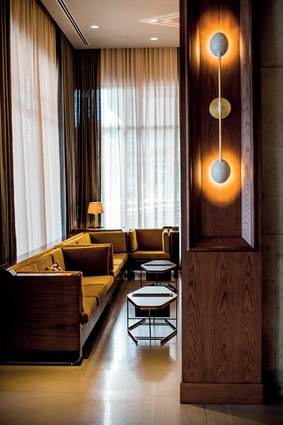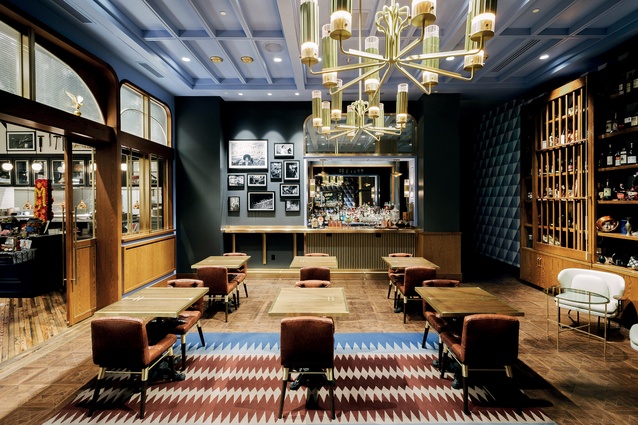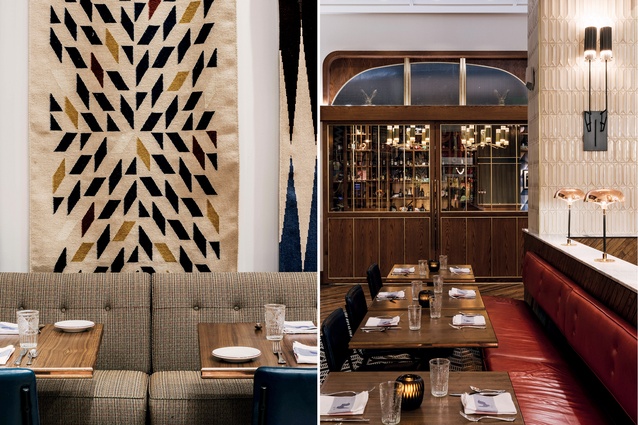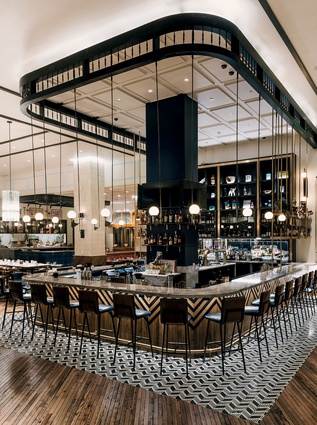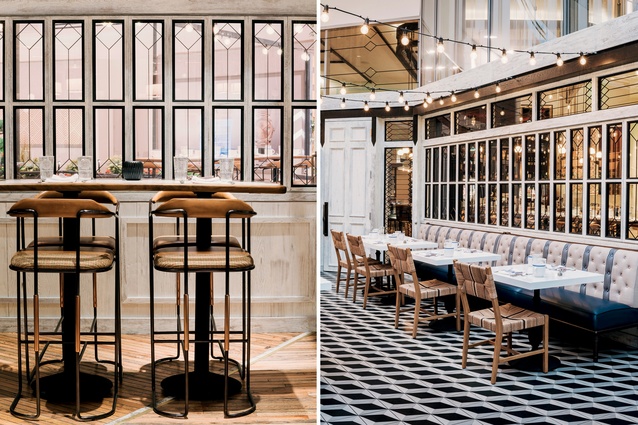From NZ to NYC: Danu Kennedy
As design director for Parts and Labour, South Island-born Danu Kennedy has a firm foothold in the hospitality design sector of the United States of America.
Interior: Where did you grow up?
Danu Kennedy (DK): Graham Valley near Motueka: a very remote, rural and naturally beautiful area. I was constantly around a lot of creative people, with a specific focus towards craft and architecture. My parents built their own straw-bale house when I was 10 years old; my brother and I were very present for that process, which was fascinating and definitely made an impression.
Interior: Who or what first sparked passion in the subject?

DK: I have always loved detail and craft so art has been influential from the beginning.
Rachel Whiteread, and Yayoi Kusama and her use of colour and dreamlike installations. Film and literature. I remember having a real reaction to the Farnsworth House by Mies van der Rohe when I first saw it: a perfect example of how important your surroundings are. Also, some of John Lautner’s work, particularly the way it crosses over into set design.
Interior: What did you focus on at Victoria University of Wellington?
DK: I graduated with a BA with honours in design, majoring in interior architecture. My final project and dissertation comprised a discussion about the future of interior architecture and its current role within society. It argued for the case of non-neutral flexibility, with the solution of a design approach of creating flexibility through fixed complexity.
My master’s study was an investigation into the architecture of hospitality and how it has traditionally intersected with the domestic house. I developed a body of research that argues for public interaction within our most-private environments through the offer of hospitality to the stranger and the way in which architecture’s relationship with culture and society is intrinsic in both history and the future.
Interior: What came next?
DK: I left the country straight after I graduated and started at BArC Studio, which is a Brooklyn-based architectural collective. I then moved on to work for David Howell Design, a Manhattan based architecture and interior design firm. Both of those experiences were great. I was definitely thrown straight into it, which meant my development was accelerated. From there, after realising my creative interests were expanding beyond residential design, a friend and I had the opportunity to take on a coffee shop project for friends in lower Manhattan (Happy Bones).
Interior: What are some of the largest differences you have noticed about the interior design profession there as opposed to in New Zealand?
DK: I think now is a good time to be a designer in New Zealand; there’s a heavy focus on interior design worldwide and everyone wants authenticity. New Zealand is a powerful place to pull from creatively in terms of concept and design ethos, materiality and identity, and has a unique set of identifying characteristics and history that I think the rest of the world would enjoy seeing expressed.

Interior: How did you end up at Parts and Labor Design (PLD) and what does your role entail?
DK: I started here in 2014. I wanted to move away from residential and into the commercial and hospitality fields. My role started out as senior designer, design lead on a couple of restaurant projects and then, pretty soon after, we took on the Thompson Nashville hotel project which was my main focus through completion. Their style of heavy integration and attention to detail was super-inspiring to me and being able to design everything from the architecture to the fixtures was a treat (a lot of work though!).
Taking on the position of design director has been an evolution of the company growth and, also, of the relationship between the three of us. My role has grown to cover business development, press and the day-to-day running of the studio, as well as the individual projects themselves. The three of us don’t necessarily have different roles but all share the load and this allows us to be flexible with travel, etc. I think we make a good team because we are able to jump from the micro to the macro and bounce ideas off each other whether it’s with regard to wall construction and how a surface material is going to terminate or how a bulb should be accessed in a wall sconce.

Interior: What was your first project there?
DK: Steadfast in Chicago, a restaurant located within the Kimpton Gray Hotel. I learned a lot on that one and there were a lot of firsts, such as the level of detail and customisation through furniture and lighting. It meant I had to understand completely the purpose of every piece within the space. With hospitality and commercial projects, you have to understand operations, and maintain awareness and focus on guest experience; otherwise, what you are creating won’t work. I think that was the most-valuable thing I learned first off: understanding the importance of taking the time to engage thoughtfully and fully.
Interior: As you mention, PLD is well known for custom-designing a huge range of the details that go into a space. What does a project gain from such a process?
DK: It’s really about offering a product that is unique to the client. It enables us to have full control over our designs and how we want a space to feel; it also pushes us creatively as designers as no two projects or designs are alike. We don’t reuse furniture or lighting designs from project to project unless we feel there’s an advantage to it.
That’s not to say that we never source spec furniture or lighting off the shelf because we do (co-working space Blender was 80 per cent off-the-shelf products and had only a handful of custom lighting and furniture pieces) but, overall, we operate at about 90 per cent custom. There are obvious advantages to it like ensuring that we avoid using the same fixtures that you will see in numerous other projects from different designers but there’s also a great cross-disciplinary advantage to it as we can create amazing custom works with other talented folks.
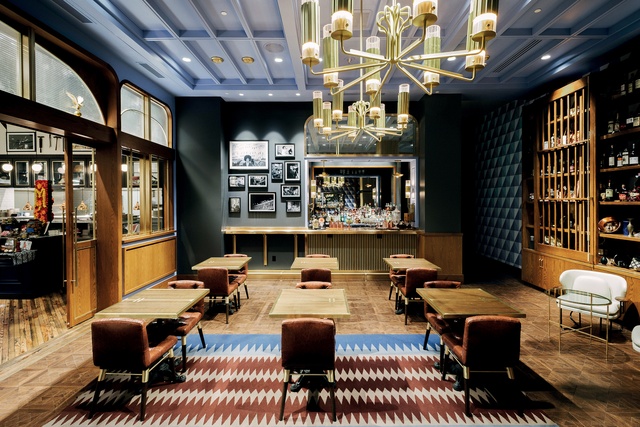
Interior: PLD projects approach context in rather interesting ways: Walnut Street Café (Philadelphia) easily feels like it belongs in Paris, Sydney or New York; Marcus (Washington, DC) is entirely East Coast but also has a very strong European palette with elements of northern Africa; while Thompson Nashville is a very unexpected take on the local scene. How do you guys approach locality and context in your designs?
DK: We pay close attention to a combination of factors when designing a project, one being the clients’ passions, interests and personalities. In the case of Marcus, the multiculturalism and the melding of multiple concepts is a strong extension of who we felt chef Marcus Samuelsson is: from a fashion standpoint, from his roots [Ethiopian-born, Swedish-raised], and from his cooking style.
Whereas Thompson Nashville hotel was less about the client as an individual and more about their desire to provide something that the neighbourhood was lacking while also maintaining the Thompson brand style. There was a heavy focus on what Nashville was to everyone involved in the project, the local, and the guests. It was fundamentally about creating a social and approachable space that was predominantly residential in style. However, we weren’t looking to tell people what they already knew about Nashville; instead, we expressed local ideas that hadn’t been given a platform yet.

We always seek to maintain a sense of place, structure and perimeter in every project while embracing a global outlook and perspective.
Interior: Any major trends you are seeing at the moment?
DK: Yes, I think there’s a growing demand for authenticity and naturality, in which people want more from an experience and they want to feel good about their indulgences. This affects design in the sense that luxury is being redefined into something that could be seen as more urban and approachable: perhaps more inclusive and socially based.
Interior: Do you still have a professional connection with New Zealand?
DK: So far, it’s been more about maintaining connections and working relationships with other New Zealanders overseas and focusing on that network, and supporting them where possible, etc. However, it’s definitely something that I would love to do and now is starting to feel like a good time to bridge the gap as I have always had the intention of staying connected. I recently had a conversation with Rufus Knight of Knight Associates, while he was here on a work trip, about wanting to help grow the industry in New Zealand and give back to the design community there, if that’s the right way to say it. I am always on the lookout for New Zealand designers and products coming out of there.
This article first appeared in Interior magazine.


